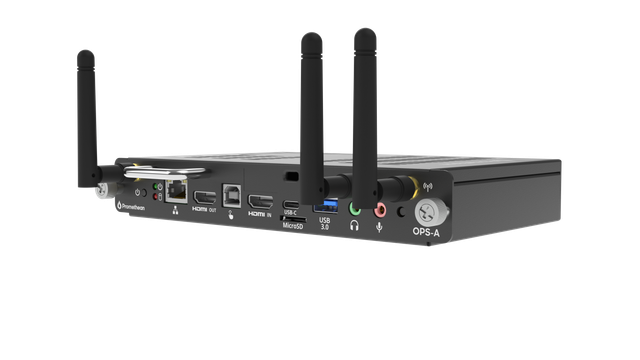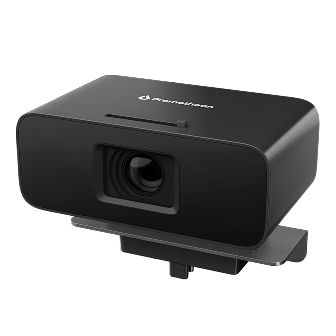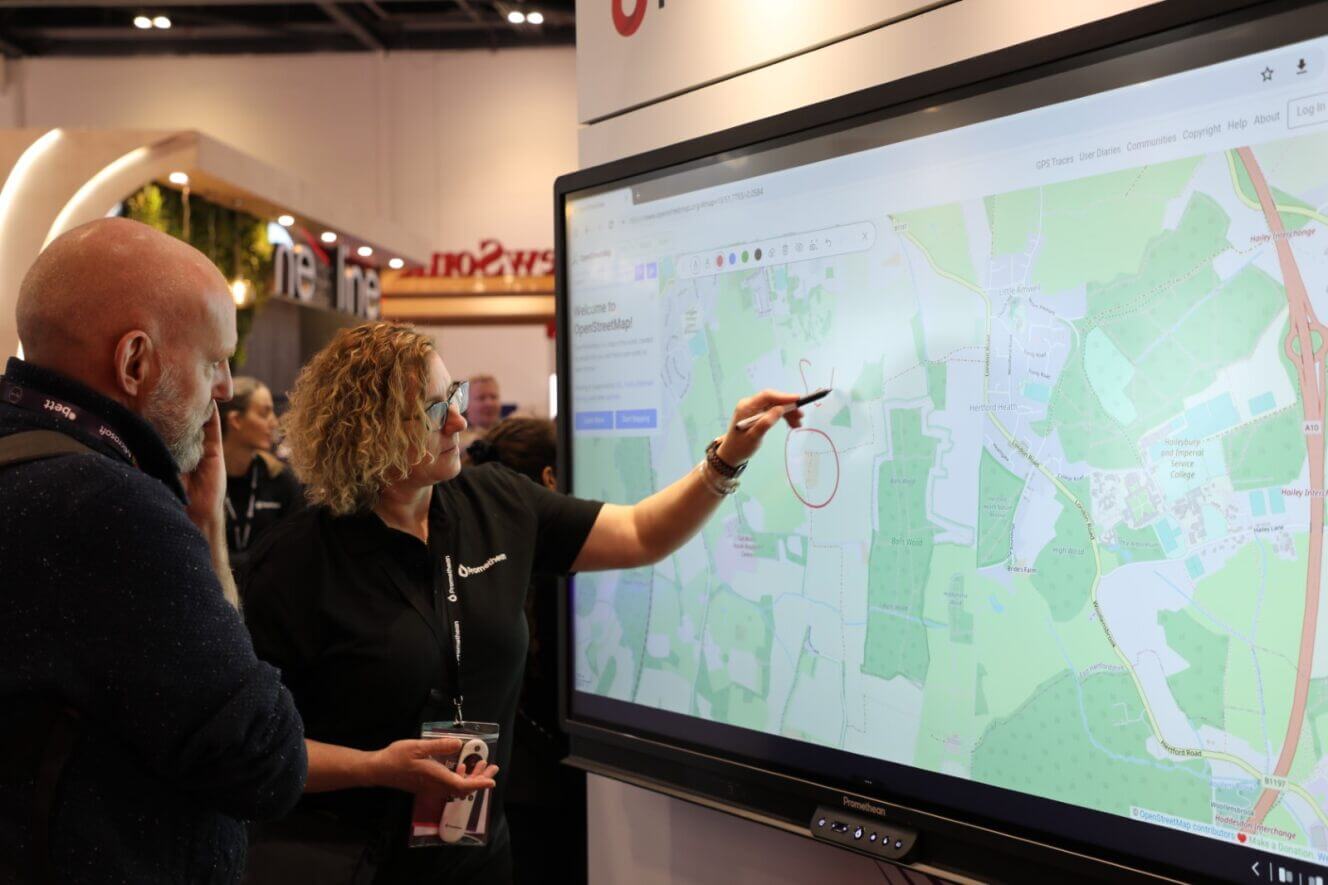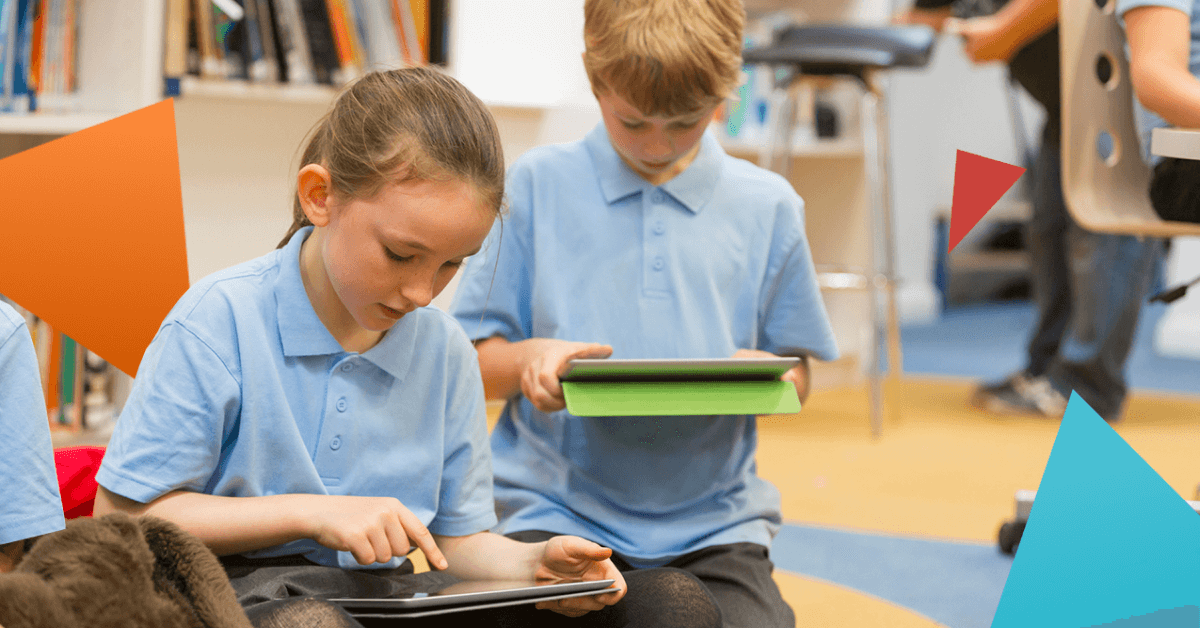Published on August 11th, 2025
Sustainable Teaching: How Technology Can Help You Achieve Your Sustainability Goals
14 minute read

Summary
In today’s classrooms, sustainability has become a greater responsibility than ever. As educators seek ways to reduce their environmental impact, technology, such as interactive displays, is becoming a powerful alternative to traditional teaching methods like paper handouts and outdated projectors.
Why Does Sustainability in the Classroom Matter?
Times Higher Education’s Global Student Research Panel indicated that ‘82 percent of students want to live in a way that is consistent with sustainable citizenship’. With that number only likely to increase in the coming years, it is our responsibility as educators to equip students with the skills they need to operate in a sustainability-conscious world and – more importantly – to make a positive impact on that world.
In essence, the importance of sustainability in the classroom comes down to the combined powers of theory and practice; putting knowledge to use in real-world scenarios. Many teaching theories agree that the equitable balance of these two pedagogical pillars is key to forming understanding. So, we could argue that the best way to teach sustainability is for children to see it in practice in their immediate environments – and that includes in the classroom.
In a recent study of children and sustainable behaviour, researchers found that when students are introduced to sustainable practices at an early age, they are more likely to engage in eco-friendly activities as adults. Perhaps more interesting, is the influence that children can have upon their families’ current behaviours. By teaching and demonstrating sustainable practices, not only are we influencing future behaviours, but we have the opportunity to positively impact sustainable practices in the immediate term.
How Touchscreens Can Contribute to an Eco-Friendly Classroom
According to the UK’s leading paper shredding company Shred-On-Site (and yes, they do have a sustainability strategy), the average primary school student generates 45kg of paper waste per year, while the average secondary school student is responsible for 22kg.
The obvious advantage of using an interactive display is that by engaging students in collaborative digital learning, we immediately make a substantial reduction in the amount of paper we’re using in the classroom. With a recent government report putting the average class size of infant pupils at 26.7, it’s not hard to see how shared activities on a screen could make rapid dents in the volume of our paper consumption.
This is, of course, but one figure in the equation, and your choice of interactive display will also have an impact on the efficacy of your sustainability efforts. While most displays are designed to be more energy-efficient than traditional monitors, there are some nuances to be aware of.
All Promethean products, for example, are compliant with the Waste Electrical and Electronic Equipment Directive (WEEE), meaning that the environment is considered through every stage of their lifecycle – including end of life. As part of our sustainability commitments, we have a recycling programme that operates across the UK, so when you’re eventually ready to upgrade your display, it need not go into landfill.
Promethean products also incorporate device management software to help achieve energy efficiency. Our displays include proximity sensors that power down the panel when nobody is present, and also allow IT managers to power down individual panels or an entire fleet of panels at the end of the day from a central location. This means you can be sure that you’re achieving energy savings.
Furthermore, the modular design of the ActivPanel LX and the ActivPanel 10, for example, means that if you need to replace or upgrade your device, only the computing device needs to be changed, as opposed to the entire panel. This ensures that you’ll have the most up-to-date technology while remaining confident that you’re saving energy and money, reducing waste, anpd promoting sustainability in the classroom.
Some Benefits of Sustainable EdTech Solutions
We can take it as a given that the most prominent benefit of sustainable teaching technologies lies in reducing our carbon footprint in schools, but there are a number of other advantages we can enjoy.
Cost Savings
Perhaps the most compelling advantage to those in charge of resource budgets is the cost savings that sustainable teaching resources can bring. When we look at the aforementioned figures pertaining to paper usage and consider that in 2025, 100 sheets of A4 paper cost somewhere in the region of £0.62 – £1.13, it becomes quickly evident how much of a saving we stand to make on materials. And that’s not even factoring in the other stationery required – pens, pencils, rubbers, rulers, etc.
There are also cost savings found from a technological perspective. The modular design of ActivPanels, for example, means that you’ll never have to replace the entire system. With integrated features such as webcams and speakers, you’ll also save money on accessories – not to mention that it’s a cheaper solution than using an interactive whiteboard with a projector setup.
Material costs aside, we’ve already seen the potential energy savings associated with choosing a sustainably designed interactive display. With centralised management software and proximity sensors, you can be sure to make cost savings on your institution’s energy bills – especially when we upscale this from one device in one classroom to a fleet of devices across the school.
Student Engagement and Collaboration
Interactive displays in particular can bring a number of pedagogical benefits to the classroom. Digital panels have been recognised to increase student engagement in the classroom since their widespread introduction in the early 00s, but recent research has suggested that they also inspire higher levels of metacognitive activities and can lead to improved writing achievements in group settings.
The technology has also been demonstrated to foster creativity and co-operative skills among students, setting them up to prosper in an increasingly competitive workplace.
Access to Learning Materials
Another benefit of incorporating interactive displays into your classroom is access to teaching software. With instant access to a world of online multimedia materials, we’re no longer beholden to the shelves of our school libraries for learning resources – and again, there are substantial cost and environmental savings to be made when we do not need to account for enough hard copies for a whole class to share. Moreover, the collective nature of interactive displays allows our pupils to share their favourite learning materials – videos, podcasts, interactive games – with the rest of the class, allowing for a truly collaborative learning experience.
Considerations in Adopting Interactive Displays
Adopting digital learning technologies into our curriculum and teaching strategies can require a substantial change to our ways of working. There are two primary – but not insurmountable – challenges to be aware of.
Affordability
There’s no denying the fact that interactive displays can be more expensive when compared to traditional teaching resources. However, their lifespan and versatile nature (not to mention the fact that they can often act as a substitute for multiple devices) make them cost-effective in the long run, especially if you choose a model designed for sustainability and energy efficiency. You may need to take advantage of long-term financial forecasting in your institution in order to benefit from teaching technologies in the immediate term.
Lack of Digital Literacy and Training
Introducing interactive displays into the classroom may mark a great change in teaching strategies, but we need to ensure that we have adequate training in place to support this. If teachers don’t have the digital competencies to fully utilise the power of classroom technologies, then the tech can become little more than expensive wall decor. When surveyed, a group of foreign language teachers indicated that for interactive displays to be effectively implemented as a teaching tool, their introduction needs to be accompanied by continuous training, a reflexive change to the curriculum, and support from educational directors. Luckily, Promethean has several digital learning courses to help you get familiar.
Achieving an Eco-Friendly Classroom Through Technology
When it comes to improving sustainability in the classroom, there are some strategies we can pursue to allow us to adopt sustainable teaching technologies in an effective manner.
Investing in IT Infrastructure
Unfortunately, upgrading tech is rarely as simple as buying a new device and mounting it on the wall – at least not if we want to benefit from the potential efficiencies to be had truly. Investing in your school’s overall IT infrastructure will allow you to identify processes that can be automated, implement energy-saving controls, and take advantage of sustainable cloud-based storage and collaborative resources. This will also put you in a stronger position when it comes to adopting future technologies.
Student and Parent Engagement
Your students and their parents are your biggest advocates for change and possess a powerful collective influence. Get them involved in the conversation and engaged with reducing the carbon footprint in your school. You can do this through classroom activities, by assigning sustainability-oriented projects for students to complete with their parents, or by tabling discussions at parents’ evenings or parent councils.
Contribute to the Conversation
Engaging your most powerful stakeholders is important, but don’t forget to contribute to the conversation yourself. This might be at teacher meetings, teaching conferences, or local council meetings. Several companies also run regular surveys on advancing sustainability technology practices in schools, so be on the lookout for opportunities for feedback to drive meaningful change in achieving eco-friendly classrooms.
Use Government Resources
While government funding for sustainable tech in schools is limited, there are some resources you can make use of. As of 2024, the government’s Plan Technology for Your School tool has some useful advice on how you can upgrade and maintain technology in your school in cost-effective ways. Keep an eye on the government website for new resources and funding opportunities, and make sure your school has a Department of Education account so that you can avail yourself of these resources.
The Future of Sustainable Teaching Practices
As we continue to embrace the rapidly evolving technological innovations of the 21st century, one of the most significant landmarks on the horizon of the teaching landscape is the evolution of remote learning. .
We’re likely to see the increasing prevalence of augmented realities, which can be used to simulate the classroom environment while reducing practices (such as commuting) that may have a negative impact on sustainability goals. This may bring about its own set of challenges – particularly with regard to socialisation and the benefits of in-person interactions – which we will need to be prepared to overcome with balanced teaching practices.
To find out more about how to make schools more sustainable and to upgrade your teaching tech, contact Promethean today.
Related articles:


























